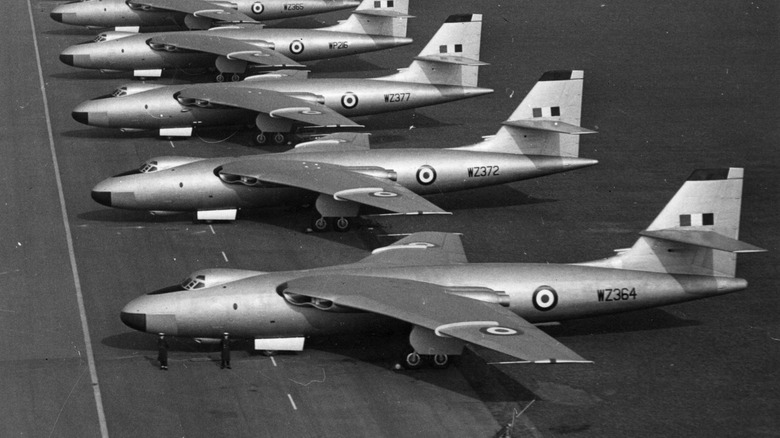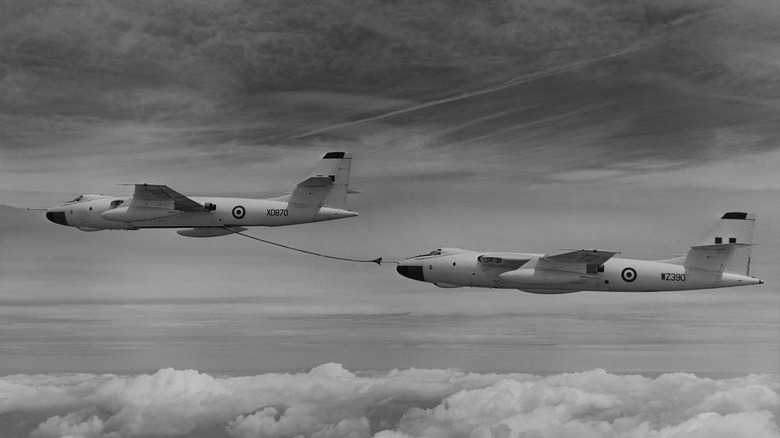The Vickers Valiant: The First Of Britain's Nuclear V-Bombers
As the very real threat of nuclear war between NATO-aligned forces and the Soviet Union kicked off in the 1940s, countries all over the world started scrambling to make a long-range bomber that could reach out and strike targets on the other side of the world. When one imagines early Cold War hostilities, one might picture B-47 Stratojets from the United States and Tupolev Tu-95 Bears from the Soviet Union duking it out. But Britain had its own aerospace project to throw into the fray of possible nuclear Armageddon, the V-Bombers, the first of which was the Vickers Valiant made by Vickers-Armstrongs (now part of BAE Systems). The plane's first flight was in 1951. It succeeded in dropping Britain's first hydrogen bomb during a test in 1957.
The Valiant shared a lot of design cues from other strategic bombers in that it was huge, fast, and capable of dropping a nuclear bomb just about anywhere in the world. The aircraft's actual combat history is rather short-lived compared to a lot of other military aircraft from the era, lasting from its first delivery to the Royal Air Force in 1955 to its retirement in 1965. But it did see service in Egypt in 1956 during the Suez Crisis where it struck Egyptian airfields, according to BAE Systems.
Not just a bomber from across the pond
From the outside, the plane looked almost featureless with its sleek design and four Rolls-Royce Avon turbojet engines integrated into the wings. It had a top speed of 567 miles per hour and a range of 4,500 miles if it used auxiliary fuel tanks that could be attached to pylons under the wings. That's just a hair faster than the Soviet's Tupolev Tu-95, but slower than the American's B-47. It was capable of carrying one 10,000-pound bomb seasoned with the extra zest of a splitting hydrogen atom, or 21 conventional 1,000-pound bombs. If the Valiant was equipped for a photoreconnaissance role or used as an airborne fuel tanker, the bomb bay could be fitted with more fuel tanks.
Overall, 104 Valiants were built across all bomber, photo-taking, and tanker variants with the addition of a handful of prototypes. According to BAE Systems, only one Valiant remains intact today and is currently resting at the Royal Airforce Museum in Cosford, United Kingdom. No other countries used the Valiant as part of their Cold War nuclear fleet.

